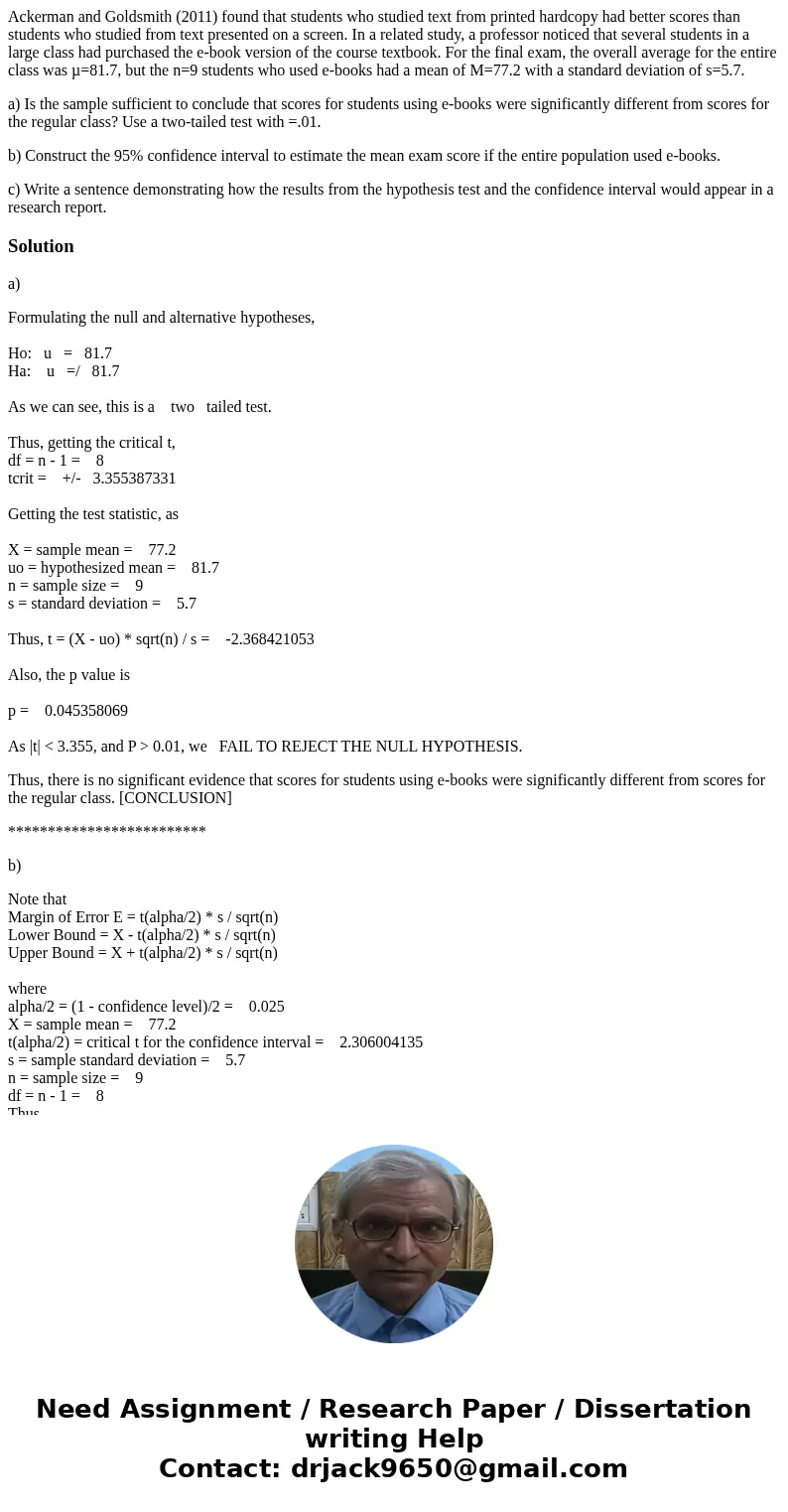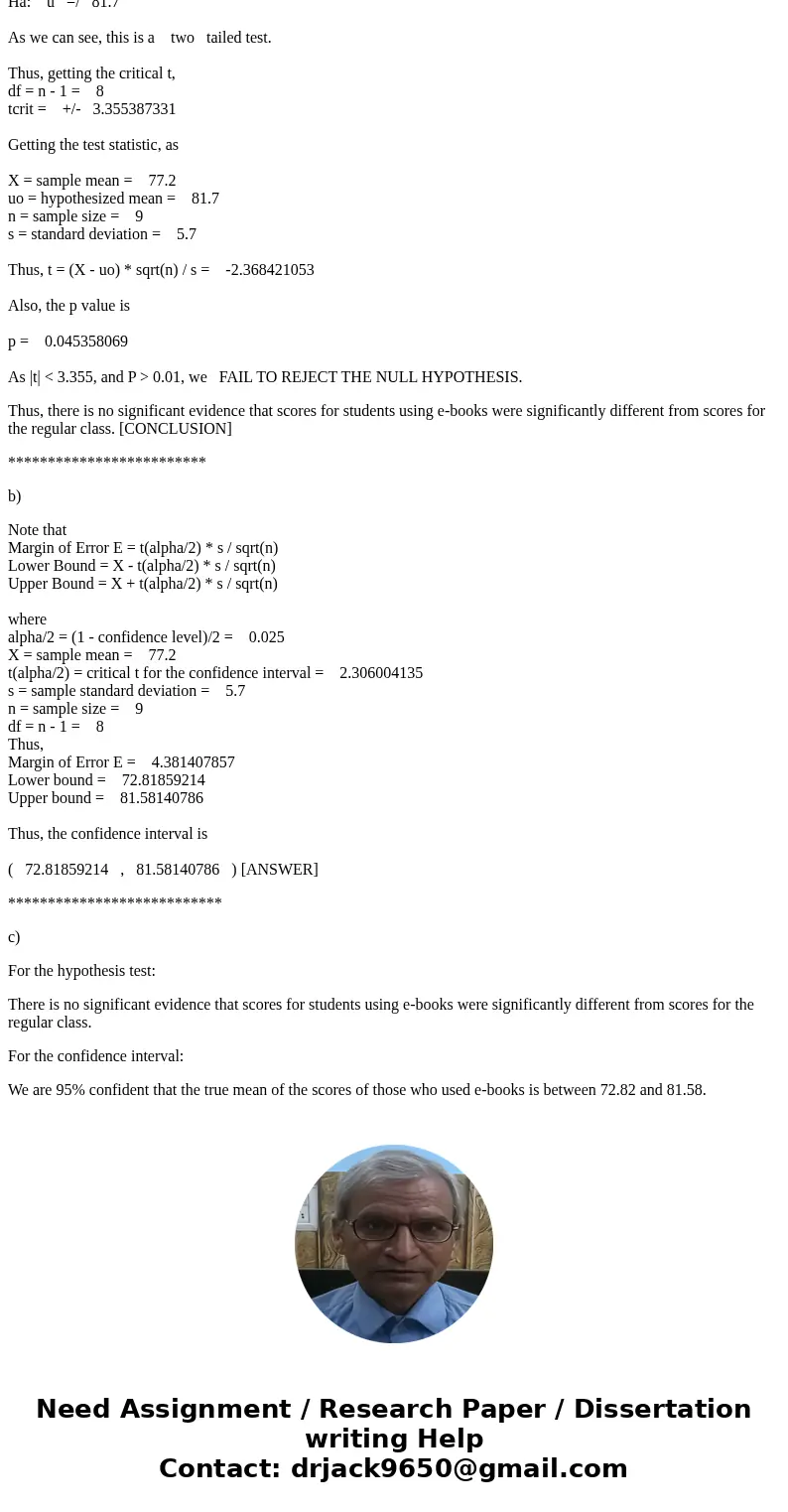Ackerman and Goldsmith 2011 found that students who studied
Ackerman and Goldsmith (2011) found that students who studied text from printed hardcopy had better scores than students who studied from text presented on a screen. In a related study, a professor noticed that several students in a large class had purchased the e-book version of the course textbook. For the final exam, the overall average for the entire class was µ=81.7, but the n=9 students who used e-books had a mean of M=77.2 with a standard deviation of s=5.7.
a) Is the sample sufficient to conclude that scores for students using e-books were significantly different from scores for the regular class? Use a two-tailed test with =.01.
b) Construct the 95% confidence interval to estimate the mean exam score if the entire population used e-books.
c) Write a sentence demonstrating how the results from the hypothesis test and the confidence interval would appear in a research report.
Solution
a)
Formulating the null and alternative hypotheses,
Ho: u = 81.7
Ha: u =/ 81.7
As we can see, this is a two tailed test.
Thus, getting the critical t,
df = n - 1 = 8
tcrit = +/- 3.355387331
Getting the test statistic, as
X = sample mean = 77.2
uo = hypothesized mean = 81.7
n = sample size = 9
s = standard deviation = 5.7
Thus, t = (X - uo) * sqrt(n) / s = -2.368421053
Also, the p value is
p = 0.045358069
As |t| < 3.355, and P > 0.01, we FAIL TO REJECT THE NULL HYPOTHESIS.
Thus, there is no significant evidence that scores for students using e-books were significantly different from scores for the regular class. [CONCLUSION]
*************************
b)
Note that
Margin of Error E = t(alpha/2) * s / sqrt(n)
Lower Bound = X - t(alpha/2) * s / sqrt(n)
Upper Bound = X + t(alpha/2) * s / sqrt(n)
where
alpha/2 = (1 - confidence level)/2 = 0.025
X = sample mean = 77.2
t(alpha/2) = critical t for the confidence interval = 2.306004135
s = sample standard deviation = 5.7
n = sample size = 9
df = n - 1 = 8
Thus,
Margin of Error E = 4.381407857
Lower bound = 72.81859214
Upper bound = 81.58140786
Thus, the confidence interval is
( 72.81859214 , 81.58140786 ) [ANSWER]
***************************
c)
For the hypothesis test:
There is no significant evidence that scores for students using e-books were significantly different from scores for the regular class.
For the confidence interval:
We are 95% confident that the true mean of the scores of those who used e-books is between 72.82 and 81.58.


 Homework Sourse
Homework Sourse